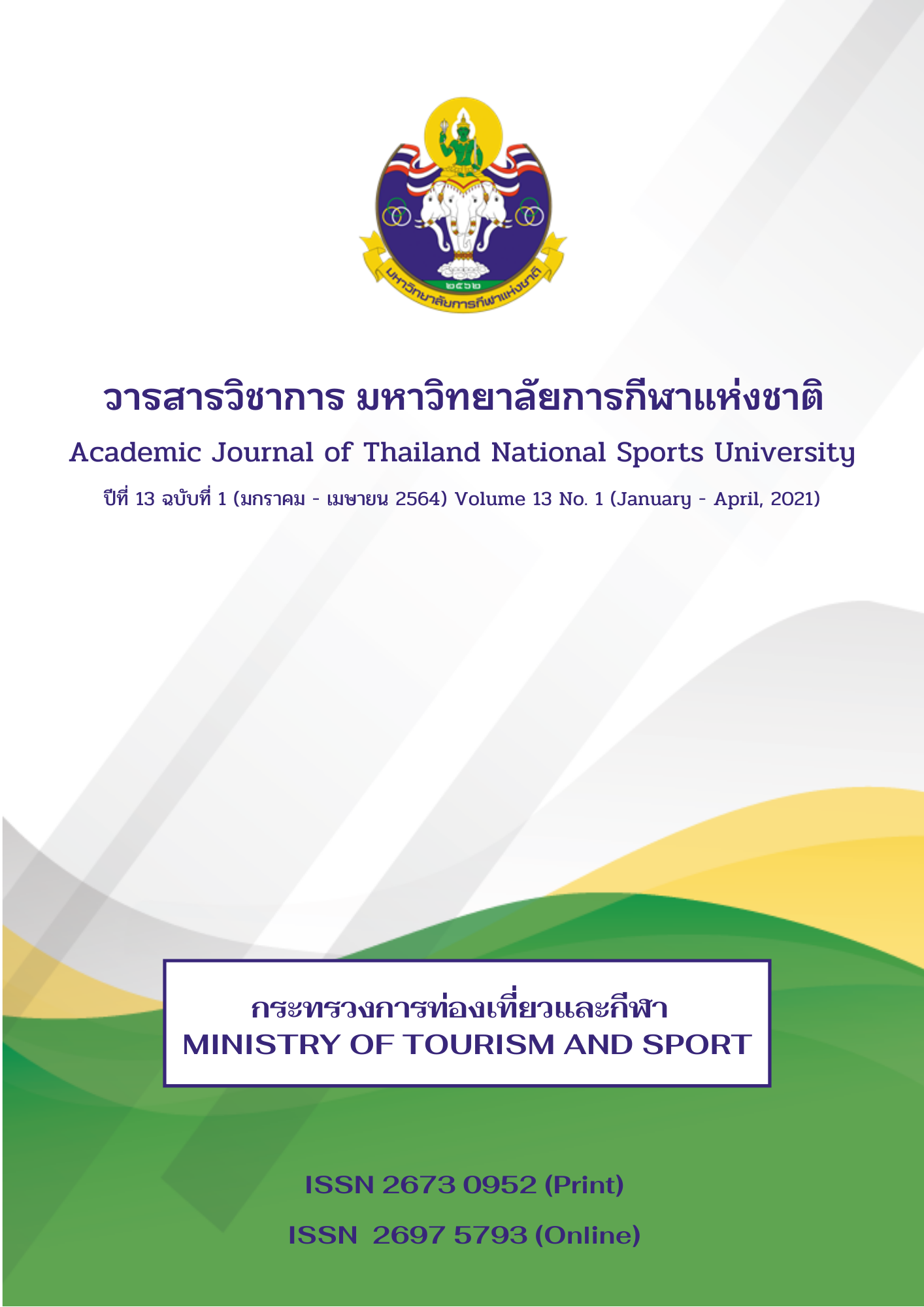FACTORS INFLUENCING THE EXERCISE PROGRAM STRATEGY FOR DIABETES PATIENTS IN PRIMARY CARE UNIT, NATIONAL HEALTH SECURITY OFFICE (NHSO), BANGKOK
Main Article Content
Abstract
The objectives of the research were: (1) to study factors influencing the exercise program strategy for diabetes patients in Primary Care Unit of NHSO, Bangkok, (2) to study the exercise program strategy for diabetes patients in Primary Care Unit of NHSO, Bangkok and (3) to suggest the exercise program for diabetes patients in Primary Care Unit of NHSO, Bangkok. The study was a quantitative research and a sample was selected from 400 diabetes patients which using the formula of Krejcie and Morgan. The data were analyzed using frequency, percentage, mean, standard deviation, one way ANOVA, Correlation Coefficient as well as using Multiple Hierarchy Regression Analysis to analyze the relationship between independent variables and dependent variables.
The results of the study were as follow:
- In term of the factors influencing the exercise program strategy for diabetes patients in Primary Care Unit of NHSO, Bangkok, implementing the strategy was found at a highest of (
= 3.58), following by strategy planning (
= 3.53), control and evaluation (
= 3.52) and strategy analysis (
= 3.48).
- In term of the factors influencing the exercise program strategy for diabetes patients in Primary Care Unit of NHSO, Bangkok, strategic analysis was found at a high level of positive correlation (r = .943), following by implementing the strategy, a positive relationship of which was at a moderate level (r = .785), control and evaluation at a low level of positive relationship (r = .685), and strategy analysis, a positive relationship of which was at a low level (r = .545) with statistical significance of 0.05 and .001 which accepted the hypothesis of the exercise program strategy for diabetes patients in resource management (4M) including Man (r =.733), Money (r =.492), Material (r =.368) and management (r =.594) that was a little positive relationship which accepted the hypothesis, indicating that the exercise program strategy for diabetes patients was quite large at statistical significance level of .05 level and statistical significance at the level of .001.
- This research suggestion is to be able to develop a system and create an exercise program mechanism for diabetic patients with the evaluation of efficiency and effectiveness as well as great
value. Data management and manpower planning correctly are required such as personal history and work history that will lead to the development of quality of life of diabetes patients including satisfaction with the environment, work system and exercise atmosphere for diabetes patients and is useful for further research.
Article Details
The published article is a copyright of the Academic Journal of Thailand National Sports University. The passage appeared in each article in this academic journal is a perspective of each author which is not related to the journal. Each author is required to be responsible for all components of his/her own article. If there are any mistakes, each author must be responsible for those mistakes on his/her own.
References
Krejcie, R. V. & Morgan, D. W. (1970). Determining sample size for research activities. Educational and Psychological Measurement, 30(3), 607-610.
Kwanhatai Tripeud, Porntip Malathum, Kanitha Hanprasitkam, and Visal Kantaratanakul. (2010). A synthesis of research of exercise influencing glycemic control in persons with type 2 diabetes. Rama Nurs J, 16(2), 259-278.
Siraprapa Kachonboon. (2011). Alternative: Physical activity in persons with uncontrolled type 2 diabetes mellitus (Master’s thesis), Mahidol University.
Somnuke Gulsatitporn & Yupa Praingamnetr. (2007). Diabetes exercise. Seminar paper in diabetes camp activity organizer project class 6. Bangkok: Theptarin Hospital.
Van, R.A.J., P. Rheeder, C.J. Eales and P.J. Becker. (2004). Effect of exercise versus relaxation on haemoglobin A1C in Black females with type 2 diabetes mellitus. QJM, 97(6), 343-351.
Warapon Wongthawararat & Wittaya Sritama. (2006). Holistic care for diabetes. Bangkok: Chulalongkorn University.


